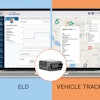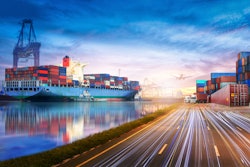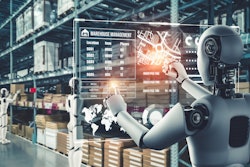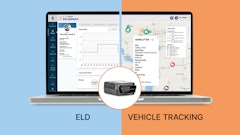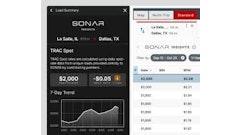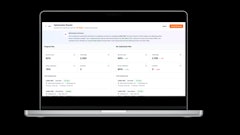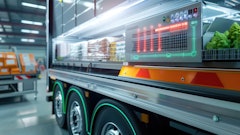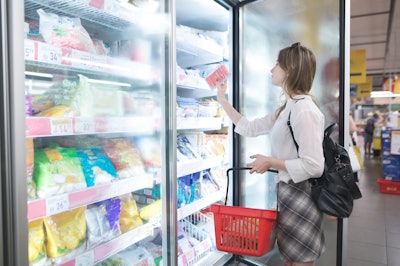
The past two years shined a light on the need for a more agile and responsive food supply chain. In the face of supply shortages and volatile market conditions, major brands have even joined forces to develop solutions for more resilient operations, and it all starts with the cloud.
For companies operating along the fragile food and beverage supply chain, disruption presents a serious threat, especially considering the razor thin margins in the food industry. However, with more nimble supply chain operations powered by the cloud, organizations can reallocate time spent on IT tasks to core business functions. As a result, these organizations can better keep pace with demand and disruption — delivering fresh, high-quality products to customers, on time and on budget.
Your food supply chain must be resilient to succeed
When a shopper heads to the grocery store, they expect to find the package of fresh chicken they purchase every week. Likewise, when a retailer anticipates a shipment to be delivered at a certain time, they count on those items to stock their restaurant or store.
But the past two years have taught us that things don’t always go as planned. For example, what if a snowstorm hits the delivery route? Or how do you navigate a poultry shortage? These events are not only possible, but also plausible. Without real-time data and visibility into the supply chain, enterprises are not equipped to bounce back from these types of disruptions in a timely manner.
As a result, organizations risk food spoilage, delayed orders, inventory overstock and understock — the list goes on. These issues, driven by supply chain inefficiencies, cause reputational damage and the loss of customer trust.
To better manage unpredictable market conditions, organizations along the food supply chain are turning to the cloud — in fact, just mentions of the cloud have increased 220% in the space since 2016. With a scalable cloud architecture, organizations can create efficiencies such as the ability to track products in real time, ensuring the freshest products reach their next destination along the supply chain.
Cloud use cases in the food supply chain
From the time a food product is manufactured or harvested to the time it is sold, cloud technologies increase visibility into the product’s life cycle so you can ensure its safety and quality. Cloud-based technologies such as enterprise resource planning (ERP) software, predictive analytics and artificial intelligence (AI) have helped reshape the food industry over the past decade, and their use cases are growing increasingly sophisticated, boosting both operational efficiencies and organizations’ bottom lines. Let’s take a closer look at various examples of cloud use cases along the food supply chain.
● Recall products with easier traceability. A poorly handled product recall can harm profits and wreck a business’ reputation in the food and beverage industry. To maintain customer trust and avoid lost sales and legal costs, you need end-to-end visibility into your product’s life cycle. Hybrid, cloud-based ERP software enables you to create a comprehensive, digital repository of data where each stakeholder along the supply chain can access real-time information about a product. Today, technological advancements such as blockchain are making this capability more accessible than ever. With the ability to trace each product’s information — such as its lot number or environmental conditions throughout its life cycle — you can more quickly and accurately pinpoint where, when and how a safety issue occurred. This helps reduce unnecessary waste by pulling only the products that have been recalled off the shelf.
● Manage inventory with real-time data. Food shortages have persisted throughout the first half of 2022, emphasizing the need for real-time data to drive purchase decisions and manage inventory. Cloud-based systems connected to live data sources can continuously update stock levels in real time so you never have to guess the quantity of a product you have in stock. Additionally, when you pair a cloud-based system with predictive analytics capabilities, you can forecast future trends more accurately by combining statistical algorithms, machine learning, AI and internal and external data. For example, using this strategy you can identify which time of year a certain food product is in high demand to make advanced purchase decisions. On the other hand, if it’s a time of year when the product is in low demand, you can scale back accordingly to avoid unnecessary waste.
● Control temperatures with sensor technology. From the moment a food product is manufactured or harvested, it’s at risk of reaching unsafe environmental conditions during distribution, transit and storage. In the cold food and beverage supply chain, which is complicated by the need for temperature-controlled storage and distribution, careful temperature management is critical. The integration of Internet of Things (IoT) sensors with ERP systems enables automatic temperature monitoring and logging for the storage and distribution of food products. For example, if storing packages of meat that must maintain a specific temperature and a power outage occurs, you can check the temperature log to determine whether the meat remained at a safe temperature or if it must be removed from the supply chain.
● Automate functions with AI. Perhaps one of the most ubiquitous uses of cloud technology in the food and beverage industry is automation. AI-powered automation aids the human workforce, from manufacturers and distributors to grocery store employees — a key capability amid today’s labor crisis. In fact, most functions along the supply chain today are at least partially automated, including stock pickers, point-of-sale systems and order management tools. Some fast food restaurants have even adopted fully automated drive-thru ordering systems. Regardless of the specific use case, automated functions are highly efficient and accurate, streamlining processes to move quality products out the door more quickly.
Today’s volatile market conditions require a nimble supply chain to efficiently manage disruption. Cloud-based technologies can help fill this gap with automation, a comprehensive set of data and sensor technologies that enable real-time visibility into operations. As we move through 2022 and beyond, technology should be at the forefront of your supply chain management strategy.

